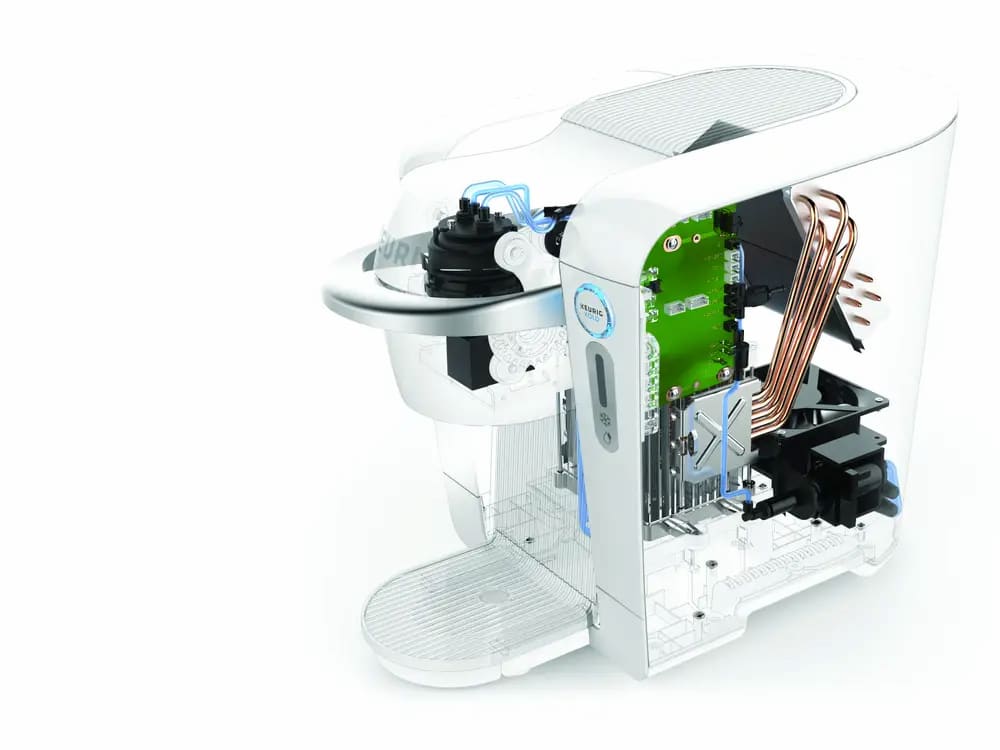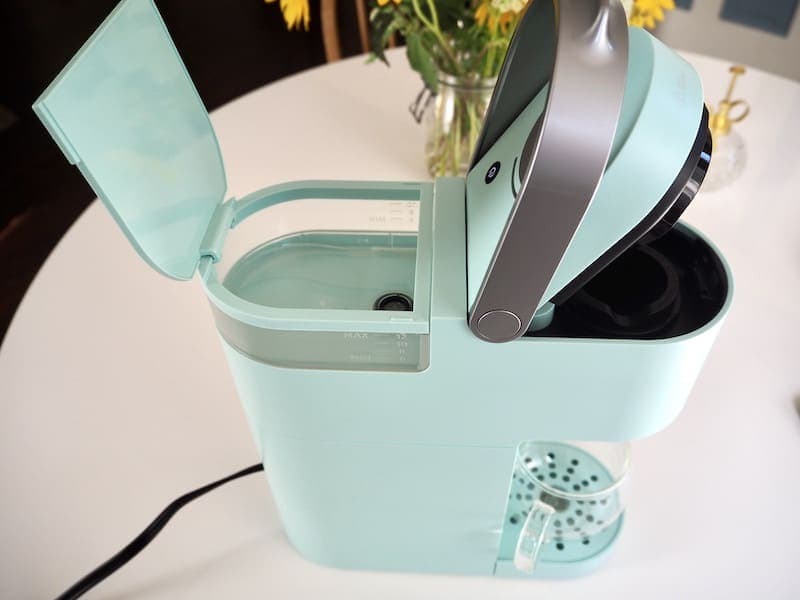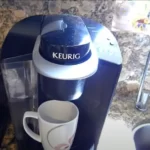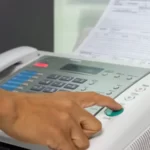
Those of us who adore our Keurigs probably couldn’t get through the day without our morning single serve fix! But it’s possible that we take these coffee makers for granted; after all, when was the last time you were curious about how a Keurig operated?
Keurig coffee makers are both adored and despised by the various segments of the community of coffee drinkers due to the way they operate.
Look at it more closely.
How Does A Keurig Work?
In order to help you better understand this unit (if you are unfamiliar with it), let’s go back to the Keurig. The Keurig is a countertop brewer that is typically bigger than the typical drip coffee maker. Additionally, its components are fairly easy to understand and simple. It has a sizable water reservoir, for instance. Once filled, it will produce roughly twice as much coffee as a pot can. Additionally, once the machine is turned on, the water stays hot.
There is no requirement to fill the water tank at all in commercial settings like doctor’s offices where the reservoir can be connected to the main water line. The lid is lifted by a top pull handle so you can insert the K-cup. Last but not least, there is a small platform for your mug and a few straightforward buttons (which we will discuss next).
How The Keurig Works
Make sure the machine is turned on and the water tank is full before brewing your coffee. The water may take some time to heat up when you first turn it on in the morning. You can start brewing your beverage after completing these procedures.
- Insert the K-cup: When the K-cup is positioned underneath the lid, the top vacuum-sealed aluminum is pierced by a needle. Additionally, the cup’s bottom develops a tiny hole as a result.
- Drip Brew: The Keurig then drips water through the top hole and through the K-cup grinds. It will also go through the filter at the bottom of the cup.
- Choosing Your Coffee: After inserting your preferred coffee, you must select the size of coffee you desire. Usually, there is a choice between small and large. Stronger and capable of filling between ½ and ¾ of a typical coffee cup, the smaller version will be more potent. The larger size, which is more diluted, will fill a typical mug. The Keurig will operate by pressing either button.
- Pouring the Coffee: The coffee is poured into your cup by using the bottom puncture hole, which allows the water to pass through the coffee grinds and filter out into the cup below.
That’s it; you can have a delicious cup of coffee in a matter of seconds. You won’t have to wait for the water to heat up before enjoying your second cup because the machine keeps the water hot all the time.
For Whom Is The Keurig Best?
For a variety of people and circumstances, this single-serve coffee maker works well. Take a look at when this machine is most valuable:
- Singles: The Keurig is a fantastic option if you live alone. You won’t have to waste any water, and it prevents you from estimating the quantity of water and coffee to use for a drip brewer’s single or double cup.
- Professional use: As we’ve already mentioned, it’s a great idea to use a Keurig in a workplace or other establishment that serves customers. Visitors and staff can both enjoy a hot cup right away thanks to this. Additionally, the single K-cups contribute to a cleaner environment. Similar to a single household, it can reduce the amount of water and other coffee supplies that are wasted.
- People Always on the Move: The Keurig is a good option if you and your family members are always on the move or if you are one of those people who rarely has time to make a cup of coffee in the morning before leaving for work. In less than two minutes, it can make several cups of coffee.
- Different Tastes: The variety of K-cups can make life a little easier if you have a large family with many members who have different tastes in hot beverages.
What Sort Of Coffee Is Used In A Keurig Cup?
There are many different responses to that. Simple coffees are used in some Keurig mugs. Others will extol the virtues of single origin, organic, or fair trade. Some people will even mention the variety.
Will you have a wide range of options? Drinking organic coffee from Tolima, Colombia, as I write this article. The Nieto family’s Los Aguacates farm produced the Caturra variety. They used a washed method, and the roasting took place three days ago.
Why Keurig Coffee Is Quick To Brew?
Let’s address the fundamental question: Why do people adore Keurig coffee?
Using those Keurig cups is incredibly quick and easy.
No mess – you won’t get coffee grounds all over the counter as you’re trying to fill a filter. A K-Cup takes care of it for you.
No need to weigh or measure coffee – this is a big plus when you can barely open your eyes in the morning before your first cup of joe. You don’t necessarily need to weigh or measure anything when using a K-Cup, so you may not want to weigh out your coffee.
Brews in a minute or less – since the The Keurig brewing system uses pressurized water in a tiny brewing cup with a foil seal, and the brewing is finished quickly.
No messy cleanup – just toss the cup in the trash and you’re done.
Why Should You Avoid Using A Keurig?
People experience a variety of emotions when discussing their coffee-brewing habits because I’m a professor of coffee. Regarding the use of a Keurig brewing system, people often confess to me (with shame in their voice) “I use K-Cups at home.”
Should they feel bad?
NO.
And yes.
Nobody should feel guilty for making coffee. It’s lovely to drink coffee.
Many people lack the time or energy to fuss with a freshly brewed pour-over in the morning. Additionally, they have extra money to buy convenient pods. They are happy with the way Keurig brewing systems work for them.
Keurig brewers do not, however, produce a cup of coffee that is inexpensive.
And if you enjoy coffee and want to enjoy a delicious freshly roasted cup, you might want to invest in a brewing system and take the extra time to grind your coffee and prepare it by hand. It is worthwhile for the improvement in flavor and satisfaction.
What Is A K-cup?
The key to the success of a K-Cup is that it is one of the easiest and most practical ways to brew coffee.
Nearly everywhere in the United States sells K-Cups, including online, at supermarkets, and convenience stores. They are offered by some specialty coffee shops too.
In boxes of 12, 24, or more, Keurig cups are individual coffee servings that are ready to use. How do K-Cups work?
To make the cups, ground coffee is poured into a paper filter, tucked inside a tiny plastic cup or pod, and covered with an aluminum foil layer.
A needle punctures the top foil of that cup when you place it in the Keurig coffee maker. Since the brew must somehow escape, another needle makes a comparable hole in the pod’s bottom.
The Keurig coffee maker then pushes pressurized water through the pod, lets the coffee brew, and then dispenses the just-brewed coffee into your cup.
The Keurig brewing system was developed by John Sylvan with the goal of making coffee brewing as simple as possible. He succeeded.
How Do K-cups Work?
It is impossible to discuss the Keurig without mentioning the K-cup. You use the K-cup with the single brewer, which bears the name of its parent machine. With the Keurig, you receive a specific amount of ground coffee in a cup along with a filter, as opposed to a bag of grinds for a typical drip.
Both supermarkets and convenience stores in your community carry a wide variety of K-cups. They are tiny plastic cups with an aluminum cover and a vacuum-sealed seal. In addition to keeping the coffee fresh, this also stops moisture and heat from entering.
How A K-cup Is Designed
You will find enough ground coffee inside the cup for one serving. You can find the filter at the bottom. In order for the Keurig to brew, the K-cup must be placed inside. K-cups come in a wide variety of varieties as well. A wide variety of coffees, including decaf, bold, mild, breakfast blend, and many more, are available.
You can always choose something else if you don’t like coffee. Tea, hot chocolate, chai, and many other beverages are available in K-cups. A reusable K-cup insert was also released by Keurig, which is significant to note.
This item is a plastic tube-like accessory with a cup filter inside and a detachable lid. If you’d rather not buy K-cups, this enables you to use your regular ground coffee or any other beverage grind.
Coffee Pods V K-cups
Despite the fact that they are very different, many people mistakenly think that K-cups are the same as coffee pods. An instant coffee pouch is what a coffee pod is, whereas the K-cup is packaged in a plastic cup made specifically for the Keurig.
The coffee pod is constructed from grounds that are compressed inside of a somewhat thick filter. They are round, flat, and malleable. In either coffee or tea, they are also available as single-serving options, and all that is needed to prepare them is hot water. Additionally, the Keurig cannot accommodate them.
A K-cup Brews What Sort Of Coffee?
Keurig coffee is incredibly popular because of its flavor. It’s superior to what they could brew at home and may even be much superior to what they purchase from their neighborhood store.
Why then do coffee snobs claim that Keurig coffee makers don’t produce a true cup of joe?
No matter how the settings are changed, it sometimes has a watery, diluted taste. A Keurig simply won’t do for those who prefer the precise flavor extraction you can get from brewing a pour over coffee.

Do K-cups Contain Fresh Coffee?
There are two perspectives on freshness.
Freshness can refer to a genuine fresh product. Consider selecting a vine-ripened tomato from your garden during the summer. That’s fresh.
As long as it isn’t damaged, a tomato can, on the other hand, can be thought of as fresh. Even after being preserved for a long time, tomatoes are still edible when they are canned.
Is the coffee from your Keurig fresh? In the second sense, yes. The K-Cup keeps coffee grounds from going bad by shielding them from the elements.
Is it fresh in the sense of a vine-ripened tomato? No, because the coffee was packaged many months ago.
Do you value freshness? That is entirely up to you to decide.
What Are The K-cup Prices?
Let’s do the numbers.
K-Cup pods cost slightly less than $1 for a pod that makes one cup of coffee.
Is that expensive?
That is incredibly inexpensive when compared to a cup of coffee at a coffee shop. You could save a lot of money if you switched from buying coffee at a store to using a Keurig brewer at home.
You can even save time by brewing a Keurig at home rather than driving or walking to your preferred coffee shop.
Depending on how good your local coffee shop is, you might even receive coffee of the same quality.
But how do Keurig cups fare when compared to buying a bag of coffee and brewing it at home, say, in a French Press that doesn’t need filters?
Each pod of coffee in a Keurig cup typically weighs 9–12 grams (0.3–0.4 ounces). That works out to around $30 per pound.
For that amount, you can buy a specialty coffee that will blow you away every time you brew it and is of very high quality.
Depending on your coffee consumption habits, Keurig cup prices can start at around $15 for a 24-count box that is simple to finish in a few days.
See more about
- Can You Make Espresso In A Keurig Coffee Maker?
- Can You Put Milk In A Keurig?
- How Many Times Can You Use A Keurig Cup?
K-cups Vs Coffee Pods
In numerous ways, a coffee pod differs from a K-Cup.
A coffee pod is a pouch made of filter paper that contains coffee grounds that have been sealed inside. In contrast to Keurig cups, which have a cup shape, coffee pods are more flat and round.
A K-Cup cannot be used in a pod brewer, and you can only brew a pod in a special pod brewer; they are incompatible with Keurig coffee makers.
PROS (+)
- Less expensive than Keurig cups
- Compostable
- Richer tastes in the cup
CONS (-)
- Less variety in types and regions
- Not as available on the market
Drip Brewer Vs Keurig
Both of these devices essentially function in the same way as drip brewers, passing hot water through coffee grounds. Having said that, there are a few distinctions to be aware of that might influence your decision.
Water
As already mentioned, the Keurig can hold a lot more water than a typical coffee maker. You can make more cups as a result without having to restock. The Keurig also has a consistent heating feature for the water. There is also something to be said for water that is wasted.
The coffee in the pot practically wastes away if some of it is not consumed. Waste is reduced when using a Keurig because only individual cups require water. The Keurig can also be connected to your water supply line, eliminating the need for tank refills. But that is more typical of an office.
K-cups V Bags Of Coffee
It is at this point where there is a good deal of controversy. K-cups are one side of the debate because they let you drink your preferred coffee in a single mug. Without changing the pot or using any other equipment, everyone can choose their beverage. Additionally, they are less messy.
K-cups, on the other hand, are not environmentally friendly. They produce a lot of environmental pollution and are challenging to recycle. In addition, heating the plastic may have negative health effects. Although K-cups are BPA-free, the chemicals in the product are still regarded as dangerous.
In addition to these problems, K-cups typically cost more than a bag of coffee. Although the brand can have a significant impact on the price, maintaining your supply of cups is typically more expensive. In addition, you can only use K-cups for coffee, not including the Keurig insert accessory we previously mentioned.
The Machine Itself
Although we already discussed the key distinctions between each machine, there are still a few additional factors to take into account. The Keurig, for starters, is made to withstand high pressures and hot temperatures. Additionally, they are typically more reliable and long-lasting than the typical drip brewer.
Cleaning the Keurig is also simpler. Not only does it have fewer parts, but most of them come equipped with a “descale” indicator light. This informs you that your machine’s performance is being hampered by a mineral buildup.
Hard water areas tend to have more of this. It can be cleaned out, though, by sending some vinegar through. Finally, as we’ve already mentioned, the Keurig operates much more quickly and is always ready for your subsequent cup of coffee.
Pros And Cons
Let’s quickly examine the benefits and drawbacks of Keurig coffee makers to help make things a little more understandable.
Keurig Pros
- Makes coffee quickly
- Water stays hot
- Gives drinkers more options
- Wastes less water
- Easier to clean
- Durable
Keurig Cons
- Not eco-friendly
- Plastic chemicals
- K-cups are more expensive
Final Words
The Keurig is a really innovative idea that made single cup convenience available to the world of coffee brewing for the first time.
Detractors will undoubtedly claim that Keurigs are blasphemous and that they don’t make real coffee, but most people would concur that coffee made from beans that haven’t been freshly roasted and ground isn’t truly coffee.
However, not everyone has the time to grind and brew every time, so Keurig consistently outperforms in terms of convenience.
I hope you found this overview of Keurigs’ operation to be interesting and helpful.
I appreciate you reading, a lot.



